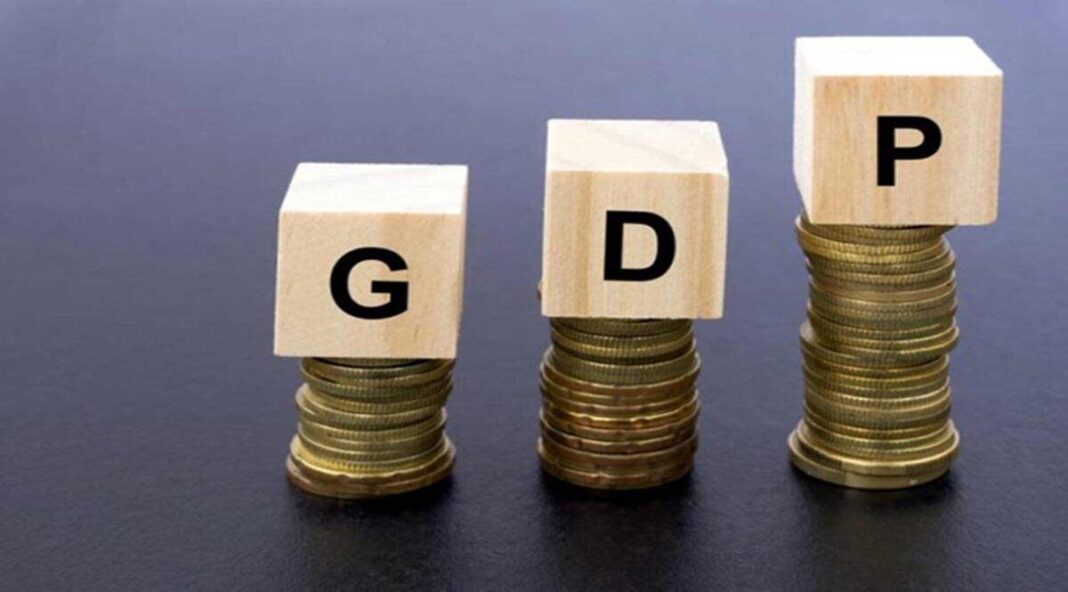By KG Narendranath & Prasanta Sahu The International Monetary Fund (IMF) and chief economic advisor Anantha Nageswaran have recently said that Indian economy’s size could cross the $5-trillion mark in 2026-27. Nageswaran also said that a 10% annual growth in dollar terms could take the economy further to $10 trillion by 2033-34. Are these very ambitious goals? Not really.
If near-term challenges to the Indian economy, arising mainly from a difficult global situation, are resolved without causing much harm to it, the country’s gross domestic product (GDP) in nominal terms could well cross the $5-trillion mark by 2027-28, if not an year earlier. This assumes that the imminent recession in the West is rather short-lived, crude oil prices don’t flare up and a cycle of widening fiscal and current account deficits is pre-empted. However, if the recession in the West lasts beyond the first half of 2023 and/or global supply disruptions re-emerge in a big way, India’s $5 trillion dream could take longer to be realised.
Reaching the $5-trillion mark in five years – from $3. 1 trillion in 2021-22- requires 61% growth during the period. Such growth is not without precedents.
In recent years, for instance, Indian economy’s size nearly doubled in the eight years to 2018-19. It had doubled in just four years in the previous decade (2004-05 to 2007-08), the fastest-growth period. A combination of high growth and relatively strong rupee – which averaged at `36-37 against the US dollar – allowed the doubling of the economy in dollar terms in the four years to 2007-08.
Of course, it had taken several more years for doubling the nominal GDP, denominated in US dollars, in the previous decades. It took 13 years for the country to double the size of its economy, from $37 billion in 1960-61, but the economy doubled in the eight years to 1981-82. It nearly doubled in the 11 years since 1991-92, the year when liberalisation/globalisation was accentuated, amid a serious external sector crisis and a sharp economic contraction.
(Of course, data under the current methodology to estimate GDP, introduced in 2015, are available for the last 17 years only, so strict comparisons are not available. But the trends are broadly instructive). In normal periods, Indian economy could have crossed the $5-trillion mark by 2024-25, as envisaged by Prime Minister Narendra Modi in 2019, if there was a twist in the fiscal policy framework to make it truly wedded to the Fiscal Responsibility and Budget Management (FRBM) road map.
This would have required 12-13% nominal growth annually (which could have been feasible unless the pandemic struck and demonetisation occurred). “While high inflation may push up the nominal GDP growth in rupee terms, it may come with a weakening rupee relative to the US dollar, which would temper nominal GDP growth in dollar terms. We currently expect the Indian economy to achieve the $5 trillion threshold by FY2027 or FY2028,” said Aditi Nayar, chief economist at Icra.
Indian rupee is seen to depreciate 4. 5-5% in 2022-23; one estimate is it could average at 78. 19 per dollar in this fiscal year.
According to Madan Sabnavis, chief economist at Bank of Baroda, the number of years to the $5 trillion goal will depend on the growth momentum. “The challenge is not growing at 15% per annum in nominal terms, but having 9-10% real growth rather than high inflation (leading to high nominal growth),” he said. To increase the growth momentum, the challenge is to raise consumption, which depends on higher income, which in turn relies on job creation.
This chain needs to work to inspire investments, which can then couple with consumption to take growth forward,” Savnavis added. DK Pant, chief economist at India Ratings, noted assuming 4% depreciation of rupee vis-à-vis the US dollar, India would need nearly 14% nominal GDP growth between 2021-22 and 2023-24 period to achieve the targets specified by the CEA. From the experience of economic development in the century, this is a difficult but not impossible targets to achieve, he noted.
From 1994-95, nominal GDP growth in rupee-term was more than 14% for 10-year time-periods on five instances – 2002-2011, 2003-2012, 2004-2013, 2005-2014 and 2006-FY15, he noted. “The combination of real GDP growth, inflation and rupee depreciation will have a strong impact on achieving the targets . Ideally a high real GDP growth, stable and low inflation and stable depreciation augurs well for the economy,” he said.
.
From: financialexpress
URL: https://www.financialexpress.com/economy/5-trn-gdp-target-within-reach-absent-external-shocks/2568465/



